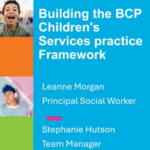
The proportion of initial social work assessments not leading to further action has hit its highest level in six years, government statistics show.
Of those referrals that led to an assessment, 27.8% resulted in no further action, up 2.4 percentage points on the previous year, according to the ‘characteristics of children in need’ statistics.
The figures, published this week, also showed the highest number of referrals to children’s services in three years, in the year ending 31 March 2017.
The statistics also found that fewer referrals to children’s services resulted in no assessment at all. Only 10% of referrals resulted in no further action, a decrease of a third over the past six years.
In total, local authorities carried out 606,920 assessments in 2016-17, a 6% increase on the previous year, with the average assessment time being 29 days.
The number of child protection enquiries carried out by children’s services also rose 7.6% on the previous year, to 185,450. The number of children on a child protection plan also increased to a record high, with 51,080 on a plan at the end of 2016-17.
More than half of assessments identified abuse or neglect as a primary need at the start, while at the end of assessments domestic violence was found to be a factor in the lives of 49.9% of children in need.



 Bournemouth, Christchurch and Poole
Bournemouth, Christchurch and Poole  Hampshire County Council
Hampshire County Council  Oxfordshire County Council
Oxfordshire County Council  South Gloucestershire Council
South Gloucestershire Council  Wokingham Borough Council
Wokingham Borough Council  Webinar: building a practice framework with the influence of practitioner voice
Webinar: building a practice framework with the influence of practitioner voice  ‘They don’t have to retell their story’: building long-lasting relationships with children and young people
‘They don’t have to retell their story’: building long-lasting relationships with children and young people  Podcast: returning to social work after becoming a first-time parent
Podcast: returning to social work after becoming a first-time parent  How managers are inspiring social workers to progress in their careers
How managers are inspiring social workers to progress in their careers  Workforce Insights – showcasing a selection of the sector’s top recruiters
Workforce Insights – showcasing a selection of the sector’s top recruiters 

 Facebook
Facebook X
X LinkedIn
LinkedIn Instagram
Instagram
Since the updated working together guidance, there is a need for MASH and other front door services to decide on a referral within 24 hours.
Therefore, if this is now being adopted, this development would not be surprising as there’s less time for the clarification work that may conclude an assessment is not required.
Not altogether a bad thing as MASH can risk holding referrals for too long, but an area authorities ought to consider when they’re thinking about worker caseloads.
This is an example of procedure overriding common sense.
These are not statistics to be celebrated. An increase in no further action outcomes encourage me as a leader:
– reflect on the quality of decision making in MASH
– review assessments to ensure they capture family history, explore the referral information, consider impact, depict the children, family and fathers voice. Contains a clear and balanced hypothesis based on evidence.
– understand the re-referral rates, children on a child protection plan, were there earlier signs of worry/risk, that preventative work could have supported.
– were there signs of emerging difficulties for children in care, which could have provided extra support to the family network.
Data needs to be understood. Recently a local authority were discovered to almost halved the number of children on child protection plans, Ofsted reviewed and the number is rapidly increasing. The importance is to understand the data, address anomalies and consistently think about the practice within the organisation.